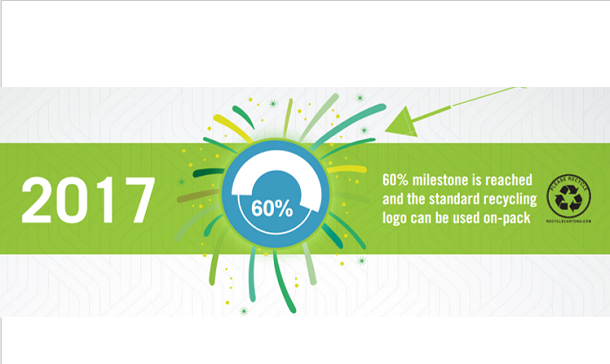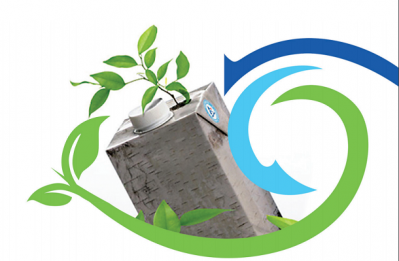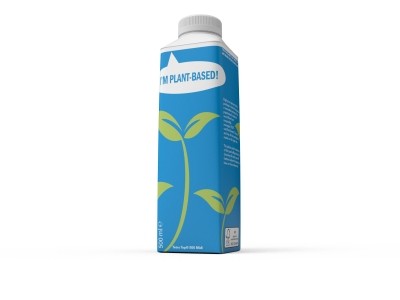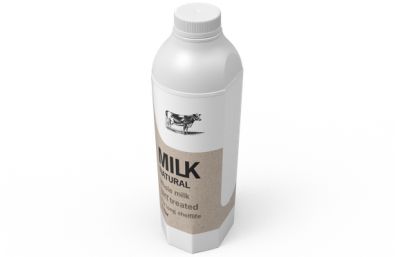Cartons help brands sell sustainability with new unqualified ‘please, recycle’ claim

Up until recently, cartons, which are increasingly popular and prevalent, could only urge consumers to recycle the package “where facilities exist,” because not enough households had access to recycling centers that accepted the form, said Jason Pelz, vice president of recycling projects for the Carton Council of North America.
But, he told FoodNavigator-USA, that is all changing now that 60% of US households are now able to recycle food and beverage cartons through their local recycling programs, thanks in large part through the teamwork of competitors that work together through the Carton Council of North America.
Pelz explained that by reaching the 60% threshold established by the Federal Trade Commission’s green guidelines, cartons can now simply urge consumers to “please, recycle” – a change that will “really limit confusion.”
Some brands worried that confusion deterred some consumers from buying their products – preferring instead to reach for goods packaged in cans and aluminum bottles that they were confident could be recycled. But the more direct claim will eliminate this risk – likely making the package more appealing to some brands.
“Being able to be recyclable is a competitive thing for any package, whether it is a carton or aluminum can, and having that improved access and becoming mainstream is going to be a benefit for cartons as whole,” Pelz said.
But, he added, “when you talk about cartons from a recycling standpoint, you really are only talking about a part of the overall environmental story.”
He explained: “There is other good stuff with a carton. From a shape standpoint they cube-out well when you talk about transportation,” which can reduce a company’s carbon footprint related to distribution. And, he said, because cartons are made from renewable resources, including 70% fiber and some have bio-based polymers which means even more renewable content.
“This helps give cartons additional positives attributes to the whole environmental discussion,” which “we hope makes us desirable for brands to want to use,” he said.
Reaching 60%
When the Carton Council formed in 2009, only about 18% of households could recycle their food and beverage cartons – a staggering low percentage that underscores the significance of the 233% increase in recyclability to get to today’s 60%.
“It has really been a journey” to increase access to recycling, Pelz said. “What we did was work with a whole lot of stakeholders, we worked with municipalities, we worked with the market structure and we worked with the end market infrastructure, meaning those people who buy the cartons once they are sorted and bailed and turn them into a product.”
He added: “We did a lot of outreach. We helped with grants to help with infrastructure. We also became a resource where we were able to provide people with the best practices whether related to sorting or bailing or starting programs at schools. We got in all facets of the recycling value chain and that is really how we drove it.”
But simply increasing household access to recycling facilities that accept cartons is not enough – the Carton Council also realizes it need to convince consumers to actually recycle the cartons.
Pelz said the updated logo and recycling claim should help significantly, noting that 57% of people look on a package for the familiar trio of arrows to help them decide whether to recycle a container.
The council also is updating two websites – one that faces consumers and one that faces industry – to help educate each about the recycling strides and how to get involved in the movement if they are interested.
Striving for 100%
While the Carton Council is happy to reach 60%, it wants to take the program all the way.
“Sixty percent is just a short-term goal. It wasn’t the end goal. We will continue to use the play book we have, which includes working with each segment of the recycling value chain and the stakeholders to try and increase access to carton recycling in those places where it doesn’t exist,” Pelz said.
He noted that the organization’s goal for 2017 is to increase access to 63% of households, which he admits is conservative and something the council hopes to surpass. To do so, it will focus on increasing access in rural communities through away-from home settings, such as schools, he said.









